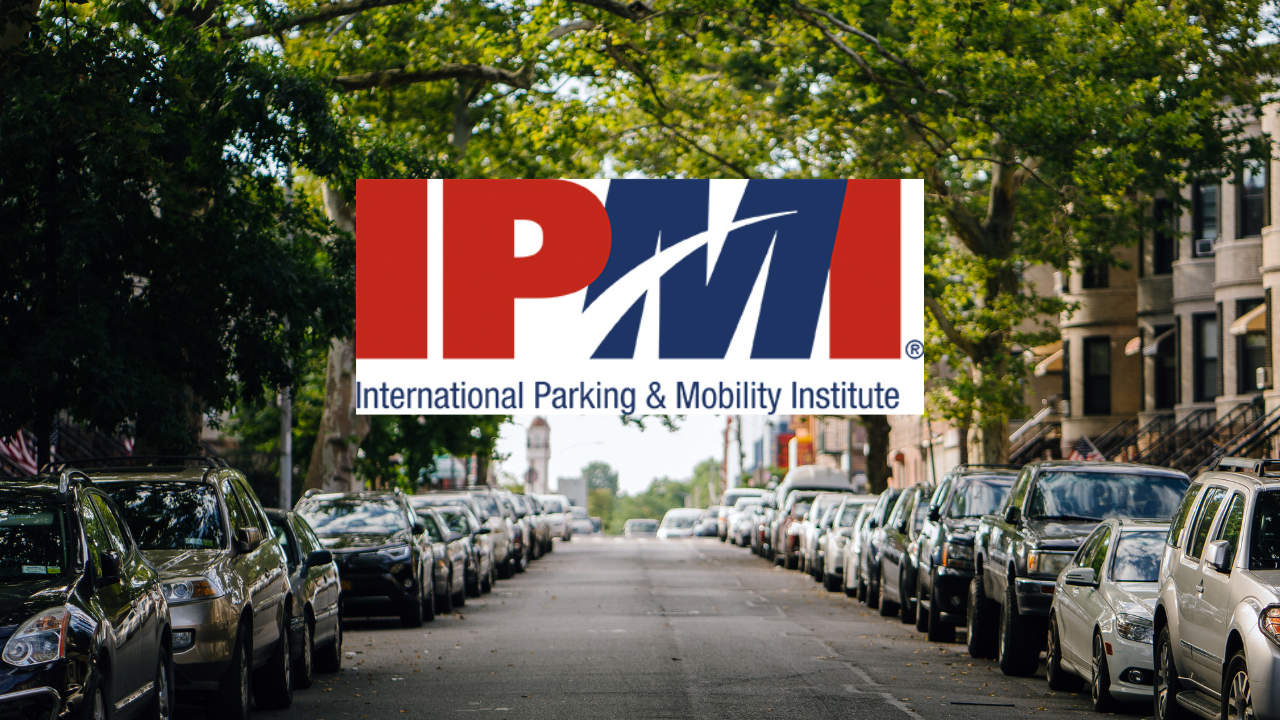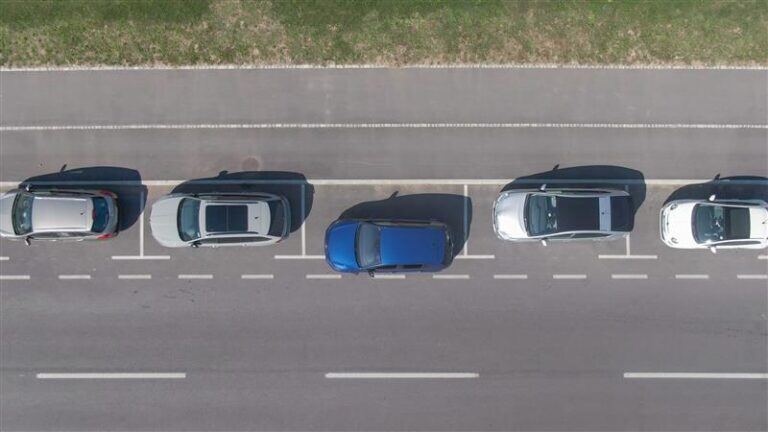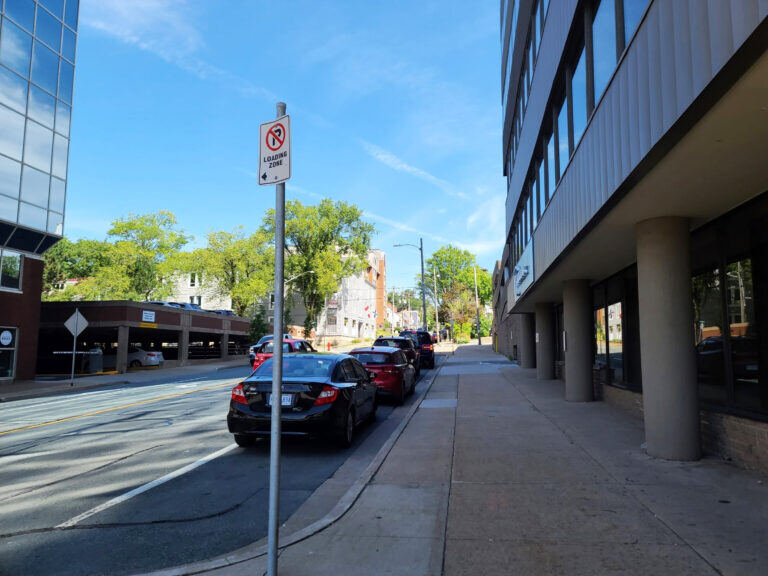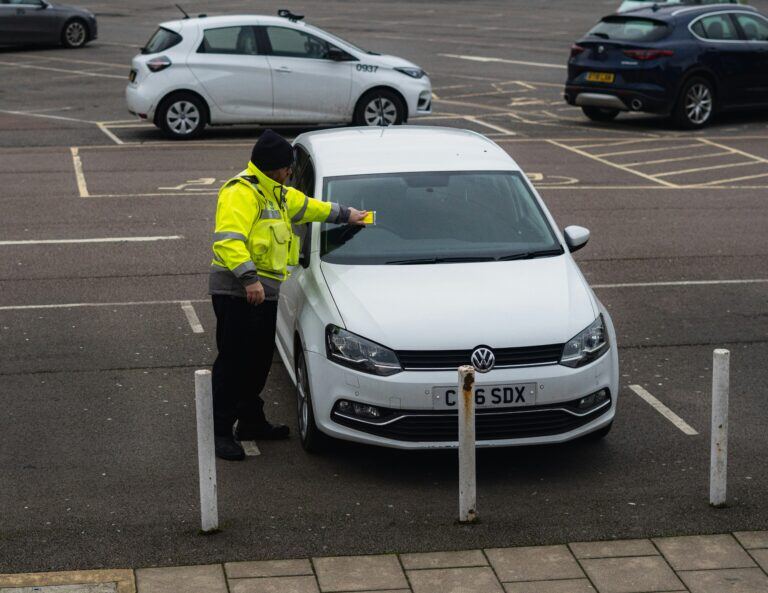8 min read
Safe Streets Start with Safe Workers: Protecting the People Behind the Parking Tickets
 Matt Darst
Aug 11, 2025 9:06:16 PM
Matt Darst
Aug 11, 2025 9:06:16 PM

Every day, parking enforcement officers step out of their vehicles and into uncertainty. They help keep our cities moving, ensuring turnover for small businesses, clear paths for emergency vehicles, and safe crossings for kids and seniors. But while they’re working to protect the curb, who’s protecting them?
We don’t talk enough about the risks faced by the people who issue citations. Unlike their counterparts in marked cruisers or behind city counters, parking enforcement personnel operate in the open, often alone, on foot, and highly visible. They navigate unpredictable traffic, confrontations with frustrated drivers, and neighborhoods with complex relationships to authority. It’s a job that can quickly become dangerous.
Procedures Protect People
In Blink, Malcolm Gladwell tells the story of a police department that reduced injuries not by increasing force, but by increasing structure. Officers followed clearer procedures, reducing the chance that a routine interaction would escalate into something worse. The same principle applies to parking enforcement: when decisions are backed by policy and process, they’re safer, for everyone involved.

Parking officers routinely face moments that require split-second decisions, how to approach a car, when to engage with an agitated driver, whether to issue a citation or walk away. Without clear guidance, those decisions can put them at risk.
Taking Steps to Protect Our Teams: The Routine Activity Theory of Crime

The Routine Activity Theory (RAT) of crime can help inform strategies for front line staff. According to this situational model, three conditions must converge in time and space for a crime to occur:
- A likely offender, or the presence of someone motivated to commit a crime against a parking enforcement officer;
- A suitable target…like a vulnerable parking enforcement officer or their property; and
- The absence of a capable guardian—anything from a police officer or security camera to a watchful neighbor or a well-lit street.
Our actions—our daily patterns and approach to work—can magnify or mitigate these three factors…and the opportunity for crime.

I. Reducing the Likelihood of Offenders
While we can't always predict who will become hostile when confronted with a parking ticket, we can anticipate where this is more likely to happen.
Risk Mapping: PEOs may face hostility on city blocks with more violent crime, for instance. Understanding this affords managers and supervisors chances to adjust deployment strategies accordingly. The City of Chicago, for example, studies and maps violent crime and threats relative to its parking enforcement zones. In neighborhoods with elevated violent crime, the City deploys PEOs in teams rather than assigning them to work alone, a direct recognition that safety increases with visibility and mutual support.

Incident Heat Mapping. Aggregated violent crimes in Chicago and as overlayed with the City’s parking enforcement zones.

In areas with historically greater violent crime and threats against PEOs, working in pairs can reduce the likelihood of abuse. Image courtesy of the City of Chicago (2025). Used with permission.
Zone Reallocation: Cities are increasingly focusing their attention on the most egregious infractions as opposed to minor parking violations like expired plates. Using data science, cities can shift enforcement away from low-risk, low-return areas (e.g., low-income residential zones) towards high-violation, high-visibility business corridors with better lighting and traffic calming can significantly improve safety.
Criminalizing Violence Against PEOs: In November 2023, Chicago’s City Council unveiled Ordinance 8‑4‑077, making it a criminal offense to threaten or assault parking enforcement officers, including City contractors or ambassadors, while they perform their duties. While fines, jail sentences, and other protections long extended to front line workers like police and fire fighters, there were no penalties for intimidating or retaliating against PEOs for doing their jobs. Sending a clear signal that PEO safety is a priority, cities can help deter attacks on them.

Chicago warns parkers of criminal penalties for threatening or assaulting parking enforcement personnel at points of sale like parking meters. Image courtesy of the Captain Nick Nicholas and the Frontline Training webinar highlighting situational awareness and PEO safety (2025). Used with permission.
Cultivating Community Support: Building public trust in parking enforcement starts well before any campaign or outreach effort: it begins by working closely with elected officials and demonstrating a clear commitment to solving real problems in the community. When leaders see that enforcement supports broader goals like safety, accessibility, and fairness, they’re more likely to advocate for the work and help shift public perception.

Humanizing PEOs: Showcasing officers as everyday people—parents, volunteers, neighbors—and emphasizing their contributions to improving traffic flow, accessibility, and safety in a community—can help to foster respect for their positions. The “Beyond the Uniform” campaign—piloted by Brighton & Hove City Council, the North Essex Parking Partnership—serves as an example. Beyond the Uniform seeks to humanize parking enforcement officers and reshape public perception of their role.



Beyond the Uniform. Campaigns both highlighting the role of PEOs and humanizing them may help reduce negative public interactions.
Despite a trend of increasing abuse, reported incidents towards Parking Partnership officers in Harlow saw a 73% decrease compared to the number recorded for the same period the year due to the program.

Communication: One of the most effective ways to minimize encounters with likely offenders is through better information—shared early and often. Pre-shift briefings can equip parking enforcement officers with key context, such as recent incidents, known trouble spots, or emotionally charged areas (i.e., protests) where tensions may be running high. Coupled with real-time alerts from supervisors, dispatch, or nearby officers, this situational awareness allows officers to approach enforcement more strategically and avoid escalating interactions. These tools don't just prepare officers—they disrupt the conditions that embolden would-be offenders by increasing the visibility, coordination, and responsiveness of the enforcement team.
II. Minimizing Targets
Enforcement officers themselves become “suitable targets” when they are (a) alone (b) in an unfamiliar place (c) wearing low-visibility uniforms (d) while lacking access to rapid communication or support. Recognizing these conditions, cities can implement a range of strategies to reduce the likelihood that enforcement officers are perceived—or treated—as targets.
Procedural Consistency: Just as routine patterns create crime opportunities; consistent enforcement protocols can reduce ambiguity and conflict escalation. Safety doesn't just come from gear or tech, but from consistency and foresight. When PEOs know exactly how to approach a vehicle, how to de-escalate, when to back off, and how to record threats, they aren’t just enforcing rules they’re protecting themselves.
De-Escalation Training: From a training perspective, officers must be equipped not just with enforcement tools, but with the skills to defuse tension and protect themselves through communication and judgment. Techniques like de-escalation training:
- Teach PEOs to stay calm, redirect hostility, and maintain control of conversations with difficult or agitated individuals
- Encourage PEOs towalk away if an issue begins to escalate, using empathy to acknowledge frustration while prioritizing personal safety.
- Emphasize the importance offinding a safe space when needed—whether by moving to a public area, calling for support, or simply creating distance.
At ParkIndy, the mantra is: “Control the interaction, not the person.” Officers are trained to recognize verbal and physical cues that signal tension and use a structured framework, known as the A.C.T. model (Assess, Connect, Transition), to defuse situations before they escalate. This approach prioritizes emotional intelligence over authority, empowering PEOs to create physical and emotional space, acknowledge frustration, and calmly direct individuals to official appeals processes.

When tensions rise, offering a business card provides a moment of pause—reminding the individual that there’s a formal, transparent process for resolving disputes. It shifts the focus from a personal confrontation to a procedural resolution, giving frustrated individuals a next step that doesn’t involve conflict.
Ambassador Training: In addition to de-escalation and conflict management, ambassador-style training helps shift the public perception of parking enforcement from punitive to service-oriented. By teaching officers to greet people, offer directions, and respond to questions with patience and professionalism, cities create more positive interactions that can defuse tension before it ever begins. Enhancing community trust makes it less likely that officers will be targeted and more likely that they’ll be respected as part of the civic fabric.
Visibility as a Deterrent: To further safeguard officers, cities can utilize larger and more prominent insignia on PEO uniforms. Bolder patches make it unmistakably clear that the individual is a municipal enforcement official, not a private citizen without authority. This visibility helps reduce confusion, encourages compliance, and deters aggression. By making the role of the officer obvious at a glance, cities can deescalate situations before they begin.

Many altercations arise not just from frustration, but from uncertainty about who has the right to issue a citation. Chicago hopes to make enforcement personnel safer in part by using larger badges and logos to readily identify PEOs. Image courtesy of the City of Chicago (2025). Used with permission.
Automated Enforcement: Automated enforcement of bus and bike lanes helps improve parking enforcement officer safety by removing the need for in-person ticketing in some of the city’s most high-conflict zones. These areas often involve double-parking, heavy traffic, and frustrated drivers, conditions that can quickly escalate. By shifting enforcement to cameras, cities reduce the number of face-to-face confrontations, allowing officers to focus on areas where personal presence is most effective and safest. It’s a way to enforce smarter, while minimizing risk.




City of Chicago vehicles with specialised cameras monitor bus and bike lanes, capturing infractions and issuing warnings and parking contravention notices (PCN). Images courtesy of the City of Chicago (2025). Used with permission.
III. Compensating for the Absence of a Capable Guardian
The absence of a visible deterrent or support structure can increase the likelihood that PEOs are viewed as vulnerable—and therefore, as potential targets. For parking officers, a capable guardian might take the form of body-worn cameras, real-time GPS monitoring, clear visual markers of authority, or even the simple presence of a teammate. Cities that invest in these visible and responsive safeguards aren’t just deterring would-be offenders; they’re sending a clear message that their officers are never truly alone.
Real-Time Monitoring as a Safety Net: Establishing a dedicated real-time monitoring room can serve as a virtual guardian. Using GPS tracking, live vehicle camera feeds, and location-based alerts, supervisors can maintain constant situational awareness of their teams in the field. This centralized system allows for rapid response to emerging threats, coordinated dispatch during incidents, and post-incident review through stored video. In a job where tensions can escalate quickly, that watchful eye in the background is more than surveillance, it’s peace of mind.

Tools like Trellint’s CitySight® provide a moment-by-moment view into the deployment of PEO teams, documenting locations, zone assignments, and proximity to supervisors and other personnel. Image courtesy of the City of Chicago (2025). Used with permission.
From Panic Buttons to Police Radios: Technology plays a critical role in closing the gap when physical presence isn’t possible. Increasingly, cities are equipping PEOs with wearable panic buttons that connect directly to the city’s 911 center. When pressed, these devices immediately alert dispatchers and trigger rapid response protocols. Officers are also issued devices that allow them to patch directly into Chicago Police Department (CPD) district radio channels—bypassing traditional dispatch delays and connecting officers instantly to local law enforcement. This integration isn’t used only in emergencies; it’s also a critical tool for reporting stolen vehicles or escalating incidents in real time.
Body Cameras: Cities like Indianapolis have taken a proactive stance by equipping every PEO with a body-worn camera. This isn’t just about evidence collection—it’s a visible deterrent. Offenders are far less likely to escalate when they know their behavior is being recorded. The footage serves a dual purpose: validating incident reports and informing future training, helping officers refine their approach to conflict and remain safe in the field.



In Indianapolis, body cams deter negative interactions and provide opportunities for training. Images courtesy of ParkIndy, LLC (2025). Used with permission.
The Power of Visibility: Government-branded vehicles remind the public that PEOs are professionals representing the city. This visibility reinforces authority, reduces confusion, and can help de-escalate tensions before they arise.
Support After the Incident
When altercations do occur, cities must ensure that front line representatives are supported through reporting protocols, access to care, and legal resources. Officers should be encouraged—but not pressured—to press charges against assailants. Further support can be provided through the provision of footage, incident documentation, and time off for court appearances to back PEOs up.

Expanding the Definition of Safety
Safety for parking enforcement officers isn’t just about preventing confrontations or criminal acts—it’s also about protecting their health and well-being in every condition they face on the job. Extreme heat and cold pose serious risks, especially during long shifts spent outdoors. Proactive safety measures like weather alerts, hydration reminders, guidance to take extra breaks, or shifting to vehicle-based patrols during extreme cold can help mitigate these risks. Pre-shift briefings can reinforce these protocols and give supervisors a chance to assess conditions and adapt assignments accordingly. By treating environmental stress as seriously as personal safety threats, cities demonstrate that they value officers not just as enforcers, but as people—and that can make all the difference in both retention and performance.
Designing Safety into the Job
These aren't just operational upgrades — they’re acts of care. They communicate to officers: You matter. Your safety is not negotiable. And they communicate to the public: This system is professional, intentional, and built to serve fairly.
When enforcement programs are designed with care — and officers are trained and supported with clear, consistent procedures — everyone benefits. Confrontations are reduced. Compliance improves. And the curb works better for everyone.
ADDITIONAL RESOURCES
- From Patrol to Parking: Why Training is Critical for Frontline Personnel
- Frontline Training Webinar
- Blog: Plugging Parking Enforcement and Revenue Leaks with Insights
- Blog: Improving Parking Enforcement Officer (PEO) Scheduling
- Blog: We Move this City: Chicago’s Smarter—and Safer—Streets
- Blog: Improving Social Equity while Optimizing Parking Enforcement Operations




